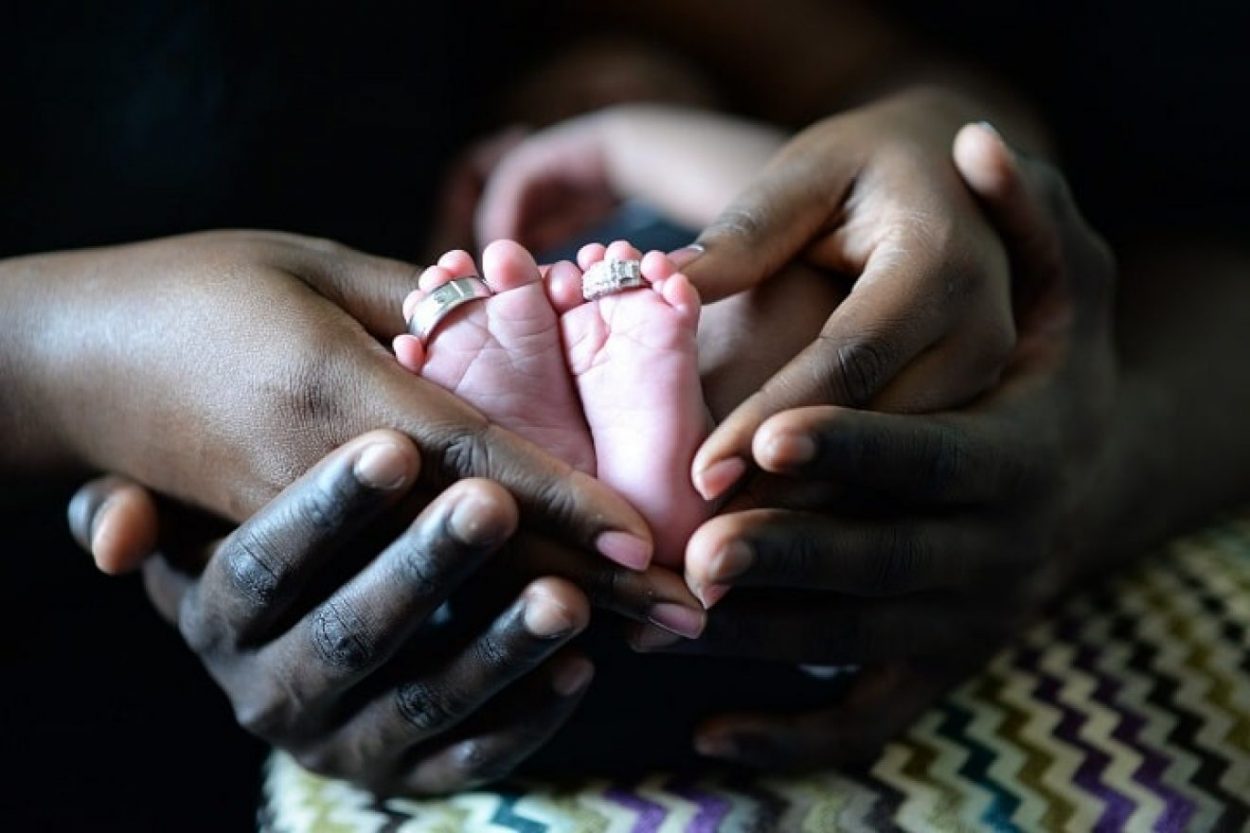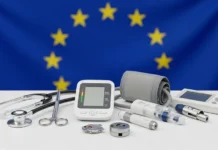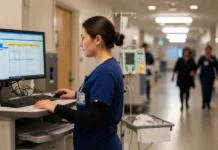Every day, about 830 women die of pregnancy-related causes, approximately two-thirds of these occurring in sub-Saharan Africa. For women undergoing caesarean sections in low-and-middle income countries, the chances of dying are 100 times higher than their counterparts in higher-income countries . While South Africa and several other African countries are making efforts to bridge the gaps, inequalities in pregnancy and childbirth care can mean the difference between life and death for women and their babies. These inequalities are a combination of lack of access to emergency delivery care for the poorest groups and inadequate quality of care, even for those able to access medical attention, asserts Dr Adeline Boatin, who is the Assistant Professor at the Department of Obstetrics, Gynaecology and Reproductive Biology at Harvard Medical School. Addressing the topic of “Inequalities in global health – #blackmamasmatter” at the upcoming Africa Health Conferences, Dr Boatin adds that, “Both under use and overuse of caesarean deliveries carry increased risks of complications over natural deliveries for both mother and baby. These risks include infection, bleeding and surgical complications”. The risk of complications during pregnancy and childbirth for all women mostly stem from problems during birth, including severe bleeding, infections, hypertensive disease of pregnancy and unsafe abortions. While, about 239 women out of every 100,000 die during delivery in developing nations , the risks are highest for adolescent girls under the age of 15. There is a close link between maternal and newborn health, which means that lack of proper care during and after pregnancy can also have tragic consequences for newborns. According to the World Health Organisation, in 2015, it was estimated that globally, 2.7 million newborns died and a further 2.6 million were stillborn. Boatin believes that the presence of skilled health professionals during the fragile, time sensitive pregnancy and birthing process could drastically reduce these numbers. “We are far behind on adequate number of health professions whether we are talking doctors, nurses, midwives, or more specialized expertise. One modelling metric recommends the number of surgeons, anaesthesiologists and obstetricians for sufficient access to obstetric surgery and care would be 20 per 100,000 people. The average for low income countries, including many countries in Africa is 0.7 per 100,000”, she says. Boatin adds that wealth and geographical location are key contributors to inequalities in access to care. “Women who are poor and reside in remote areas are the least likely to receive quality healthcare, especially in regions with a shortage of healthcare workers,” she says. In contrast, most women in high-income countries have at least four antenatal visits, are attended by professional healthcare workers, and receive postpartum care . Maternal deaths have a severe impact on social development as a million children are left motherless each year. These children have a far greater chance of dying prematurely after their mother’s death . While there have been various initiatives across Africa to make it easier for women to access maternal care, due to the resources required and the shortage of skilled professionals, most of this care takes place in medical facilities. This makes it tougher for poorer women in rural settings. In Mwanza, Tanzania, for example, the average distance for women to travel for delivery services is 28km – a tough feat for women in labour. The Millennium Development Goals (MDGs), which aimed to reduce maternal mortality by 75% by 2015 may not have fully succeeded, but several countries in sub-Saharan Africa realised significant improvements in maternal healthcare during this time. However, to ensure an accelerated decrease in maternal deaths by 2030, the Sustainable Development Goals (SDG) agenda aims to ensure that high quality maternal and newborn healthcare is available, accessible and acceptable to all who need it. Because of the holistic approach taken by the SDGs, it is estimated that as many 19.4 million mothers and children have been saved post-MDGs, many of these in sub-Saharan Africa. In South Africa, the government has introduced an ‘eight contact’ model for pregnant women, which calls for three more doctor’s visits than stipulated in the previous Basic Antenatal Care policy. This model highlights the importance of doing the very first visit as early as possible. Thereafter, women will have a check-up at 20, 26, 30 and 34 weeks and then every two weeks until delivery. This will provide increased monitoring of both mother and baby and any complications found can be treated early. This model also provides regular opportunities to educate women about maternal health. As part of the move towards a National Health Insurance, the South African Department of Health has launched a handbook for the teams of health professionals working within districts. The purpose of this handbook is to reduce maternal and child deaths through providing information and guidance to these teams on aspects like clinical intervention; clinical governance and tracking team efficiency. “There is global recognition on the need to improve both access and quality. A key intervention by governments to close the gaps in equality of care should be to prioritise equity as a goal of quality health care – to ensure that all members of a population have equal access to high quality services. This requires recognition of the problem, developing measures to address inequities and tracking them to make sure goals are achieved,” she concludes. “The Medical Obstetrics Conference will feature as part of the upcoming Africa Health event and will provide a critical platform for industry leaders from across the continent to discuss the challenges of this disparity in obstetric care, while aiming to facilitate potential solutions to this important issue,” says Africa Health Exhibition Director, Ryan Sanderson. Africa Health will take place from the 28 – 30 May 2019 at The Gallagher Convention Centre, Johannesburg. Africa Health, organised by Informa Exhibition’s Global Healthcare Group, is the largest platform on the continent for international and local companies to meet, network and do business with the rapidly expanding African healthcare market. In its ninth year, the 2019 event is expected to attract more than 10,500 healthcare professionals, with representation from over 160 countries and over 600 leading international and regional healthcare and pharmaceutical suppliers, manufacturers and service providers. Africa Health has brought the internationally renowned MEDLAB Series – a portfolio of medical laboratory exhibitions and conferences across the Middle East, Asia, Europe, and the Americas – on-board as one of the highlights of the exhibition series. Africa Health is supported by CSSD Forums of South Africa (CFSA), The Association for Peri-Operative Practitioners in South Africa (APPSA – Gauteng Chapter), the International Federation for Medical and Biological Engineering (IFMBE), the Emergency Medicine Society of South Africa (EMSSA), the Independent Practitioners Association Foundation, Southern African Health Technology Assessment Society (SAHTAS), Medical Device Manufacturers Association of South Africa (MDMSA), Faculty of Health Sciences at the University of the Witwatersrand, the Public Health Association of South Africa (PHASA), The Council for Health Service Accreditation of Southern Africa (COHSASA), Trauma Society of South Africa (TSSA), Society of Medical Laboratory Technologists of South Africa (SMLTSA) and the Biomedical Engineering Society of South Africa (BESSA).
There is a close link between maternal and newborn health, which means that lack of proper care during and after pregnancy can also have tragic consequences for newborns. According to the World Health Organisation, in 2015, it was estimated that globally, 2.7 million newborns died and a further 2.6 million were stillborn. Boatin believes that the presence of skilled health professionals during the fragile, time sensitive pregnancy and birthing process could drastically reduce these numbers. “We are far behind on adequate number of health professions whether we are talking doctors, nurses, midwives, or more specialized expertise. One modelling metric recommends the number of surgeons, anaesthesiologists and obstetricians for sufficient access to obstetric surgery and care would be 20 per 100,000 people. The average for low income countries, including many countries in Africa is 0.7 per 100,000”, she says. Boatin adds that wealth and geographical location are key contributors to inequalities in access to care. “Women who are poor and reside in remote areas are the least likely to receive quality healthcare, especially in regions with a shortage of healthcare workers,” she says. In contrast, most women in high-income countries have at least four antenatal visits, are attended by professional healthcare workers, and receive postpartum care . Maternal deaths have a severe impact on social development as a million children are left motherless each year. These children have a far greater chance of dying prematurely after their mother’s death . While there have been various initiatives across Africa to make it easier for women to access maternal care, due to the resources required and the shortage of skilled professionals, most of this care takes place in medical facilities. This makes it tougher for poorer women in rural settings. In Mwanza, Tanzania, for example, the average distance for women to travel for delivery services is 28km – a tough feat for women in labour. The Millennium Development Goals (MDGs), which aimed to reduce maternal mortality by 75% by 2015 may not have fully succeeded, but several countries in sub-Saharan Africa realised significant improvements in maternal healthcare during this time. However, to ensure an accelerated decrease in maternal deaths by 2030, the Sustainable Development Goals (SDG) agenda aims to ensure that high quality maternal and newborn healthcare is available, accessible and acceptable to all who need it. Because of the holistic approach taken by the SDGs, it is estimated that as many 19.4 million mothers and children have been saved post-MDGs, many of these in sub-Saharan Africa. In South Africa, the government has introduced an ‘eight contact’ model for pregnant women, which calls for three more doctor’s visits than stipulated in the previous Basic Antenatal Care policy. This model highlights the importance of doing the very first visit as early as possible. Thereafter, women will have a check-up at 20, 26, 30 and 34 weeks and then every two weeks until delivery. This will provide increased monitoring of both mother and baby and any complications found can be treated early. This model also provides regular opportunities to educate women about maternal health. As part of the move towards a National Health Insurance, the South African Department of Health has launched a handbook for the teams of health professionals working within districts. The purpose of this handbook is to reduce maternal and child deaths through providing information and guidance to these teams on aspects like clinical intervention; clinical governance and tracking team efficiency. “There is global recognition on the need to improve both access and quality. A key intervention by governments to close the gaps in equality of care should be to prioritise equity as a goal of quality health care – to ensure that all members of a population have equal access to high quality services. This requires recognition of the problem, developing measures to address inequities and tracking them to make sure goals are achieved,” she concludes. “The Medical Obstetrics Conference will feature as part of the upcoming Africa Health event and will provide a critical platform for industry leaders from across the continent to discuss the challenges of this disparity in obstetric care, while aiming to facilitate potential solutions to this important issue,” says Africa Health Exhibition Director, Ryan Sanderson. Africa Health will take place from the 28 – 30 May 2019 at The Gallagher Convention Centre, Johannesburg. Africa Health, organised by Informa Exhibition’s Global Healthcare Group, is the largest platform on the continent for international and local companies to meet, network and do business with the rapidly expanding African healthcare market. In its ninth year, the 2019 event is expected to attract more than 10,500 healthcare professionals, with representation from over 160 countries and over 600 leading international and regional healthcare and pharmaceutical suppliers, manufacturers and service providers. Africa Health has brought the internationally renowned MEDLAB Series – a portfolio of medical laboratory exhibitions and conferences across the Middle East, Asia, Europe, and the Americas – on-board as one of the highlights of the exhibition series. Africa Health is supported by CSSD Forums of South Africa (CFSA), The Association for Peri-Operative Practitioners in South Africa (APPSA – Gauteng Chapter), the International Federation for Medical and Biological Engineering (IFMBE), the Emergency Medicine Society of South Africa (EMSSA), the Independent Practitioners Association Foundation, Southern African Health Technology Assessment Society (SAHTAS), Medical Device Manufacturers Association of South Africa (MDMSA), Faculty of Health Sciences at the University of the Witwatersrand, the Public Health Association of South Africa (PHASA), The Council for Health Service Accreditation of Southern Africa (COHSASA), Trauma Society of South Africa (TSSA), Society of Medical Laboratory Technologists of South Africa (SMLTSA) and the Biomedical Engineering Society of South Africa (BESSA).

Subscribe
- Never miss a story with notifications
- Gain full access to our premium content
- Browse free from any location or device.
Media Packs
Expand Your Reach With Our Customized Solutions Empowering Your Campaigns To Maximize Your Reach & Drive Real Results!
– Access the Media PackNow
– Book a Conference Call
– Leave Message for Us to Get Back
Related stories
Latest stories
Related stories
Subscribe
- Never miss a story with notifications
- Gain full access to our premium content
- Browse free from any location or device.
Media Packs
Expand Your Reach With Our Customized Solutions Empowering Your Campaigns To Maximize Your Reach & Drive Real Results!
– Access the Media Pack Now
– Book a Conference Call
– Leave Message for Us to Get Back

















